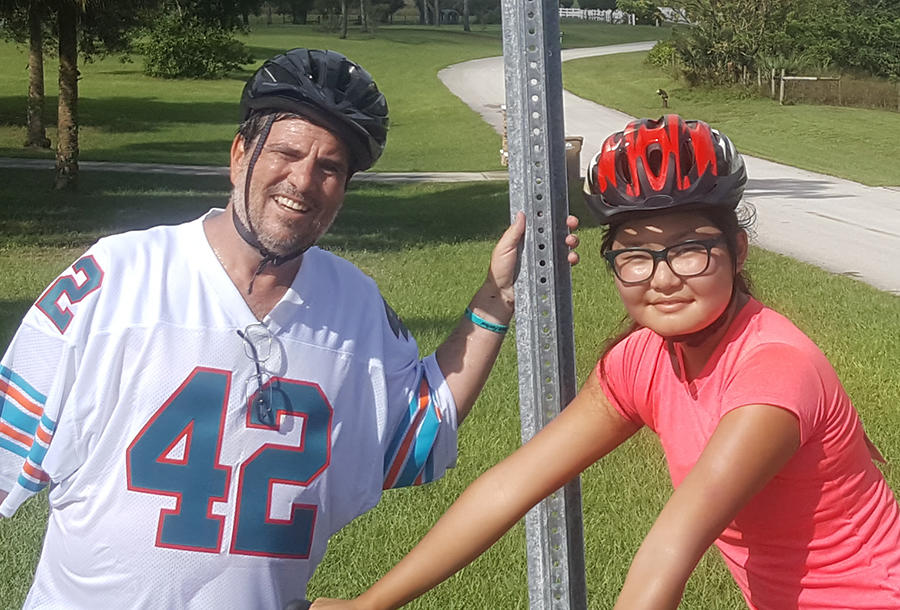Pineal Region Tumor Survivor Lives Fully with an Inoperable Tumor
, by Lawrence, Pineal Region Tumor Survivor
A rare brain tumor survivor shares how he found the best care, treatments, and resources to live.
In 2018, at age 59, I owned a law practice, was in good health, and had no reason to believe I had a brain tumor. Then, in late March, I began having headaches in the morning and minor issues with short-term memory, such as forgetting names. One night, I was at home with my 15-year-old daughter and her friend and they thought that I was acting strange. Later that night, my daughter heard me fall. I had passed out and was throwing up.
I went to the doctor and he knew something was wrong. He ordered a computerized tomography (CT) scan, and everything after that happened so quickly. I was admitted to the hospital for a brain tumor. There, doctors discovered I had hydrocephalus, fluid buildup in the ventricles of my brain, from the tumor. A neurosurgeon came to the hospital to perform a biopsy of my tumor to remove a small piece of the tumor for a pathologist to examine. He also poked a hole in one of the ventricles to enable the cerebrospinal fluid to flow out of my brain.
I am thankful for the expert neurosurgeon now, although I didn’t think about it at the time.
The procedures took about one-and-a-half hours. Afterwards, the neurosurgeon explained that he would be unable to remove all of the brain tumor because it was adjacent to the brainstem and too risky.
Five days later, before I was discharged, the neurosurgeon shared that he thought my tumor was a papillary tumor in the pineal region. Fortunately, my tumor didn’t appear cancerous, but is an extremely rare type of brain tumor.
I met with a neuro-oncologist about other treatment options. The plan was to do CyberKnife® radiation, a type of robotic radiation therapy commonly used when tumors are inoperable or too risky to remove with surgery. After three days of radiation, the tumor shrunk in half. The worst side effect was the 30-pound weight gain caused by the steroids to treat the cranial pressure.
Seeking a Second Opinion for Reassurance
A few of my doctor friends recommended I seek a second opinion. I met with another neuro-oncologist who agreed that, after radiation, the treatment plan should be to monitor my tumor with scans every three months. But I did more research online. I learned the odds of a pineal region tumor returning were very likely. I then searched for clinical studies and found rare central nervous system (CNS) tumor studies by NCI-CONNECT at NIH.
In September, I visited the NCI Center for Cancer Research's Neuro-Oncology Branch and met with Nurse Practitioner Christine Siegel and Neuro-Oncologist Marta Penas-Prado, M.D. I enrolled in an observational study called the Natural History Study. I was happy to join so I could learn more about my tumor and help future research.
In November, I began having headaches and went to my local hospital for a magnetic resonance imaging (MRI) scan. Thankfully, my tumor was stable, but had changed form due to radiation. The remaining tumor involves the thalamus, which causes bad headaches. At my follow-up appointment with Dr. Penas-Prado, she reassured me the tumor was behaving and my brain was adjusting to the presence of it. We talked about other treatment options, but she reassured me that if I am showing no signs of brain tumor regrowth, the best option is monitoring.
Learning Not to Panic
I don’t dwell on the fact that I have an inoperable brain tumor. I continue to stay busy with work and spend quality time with my family. I live a full life despite my brain tumor. I’m in touch with the best doctors and that is all I can do.
Until I found NCI-CONNECT, I didn’t know anyone else with this brain tumor type. For others with a papillary pineal region tumor, don’t panic! Procedures are evolving. Be positive and never give up hope. It’s also important to do your research, seek a second opinion, and find an expert care team so you can continue to live life to the fullest.
